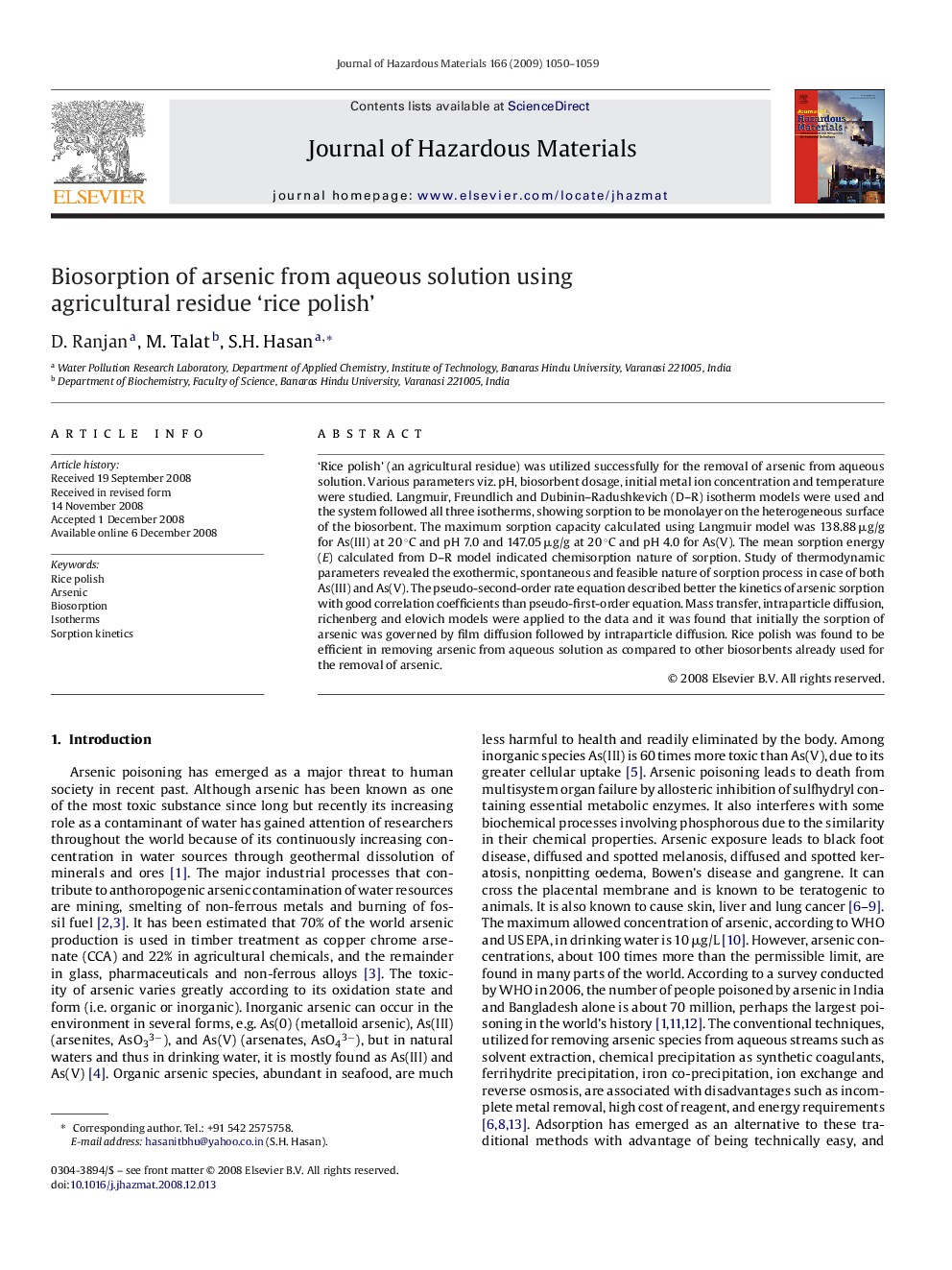| Article ID | Journal | Published Year | Pages | File Type |
|---|---|---|---|---|
| 582050 | Journal of Hazardous Materials | 2009 | 10 Pages |
Abstract
'Rice polish' (an agricultural residue) was utilized successfully for the removal of arsenic from aqueous solution. Various parameters viz. pH, biosorbent dosage, initial metal ion concentration and temperature were studied. Langmuir, Freundlich and Dubinin-Radushkevich (D-R) isotherm models were used and the system followed all three isotherms, showing sorption to be monolayer on the heterogeneous surface of the biosorbent. The maximum sorption capacity calculated using Langmuir model was 138.88 μg/g for As(III) at 20 °C and pH 7.0 and 147.05 μg/g at 20 °C and pH 4.0 for As(V). The mean sorption energy (E) calculated from D-R model indicated chemisorption nature of sorption. Study of thermodynamic parameters revealed the exothermic, spontaneous and feasible nature of sorption process in case of both As(III) and As(V). The pseudo-second-order rate equation described better the kinetics of arsenic sorption with good correlation coefficients than pseudo-first-order equation. Mass transfer, intraparticle diffusion, richenberg and elovich models were applied to the data and it was found that initially the sorption of arsenic was governed by film diffusion followed by intraparticle diffusion. Rice polish was found to be efficient in removing arsenic from aqueous solution as compared to other biosorbents already used for the removal of arsenic.
Related Topics
Physical Sciences and Engineering
Chemical Engineering
Chemical Health and Safety
Authors
D. Ranjan, M. Talat, S.H. Hasan,
